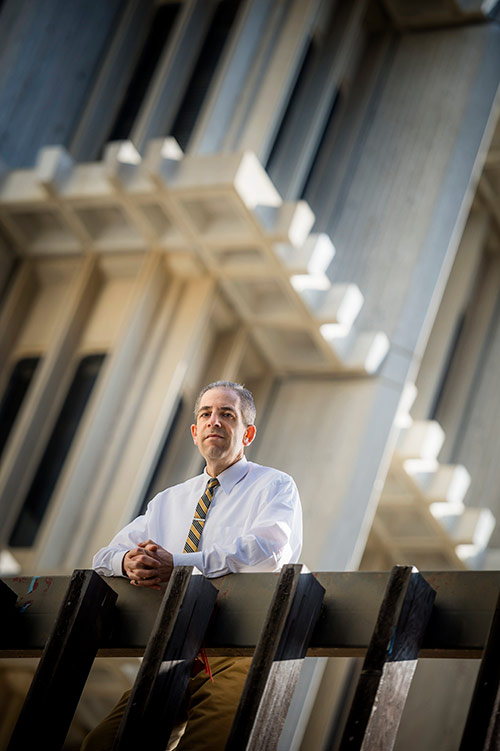
UC San Diego Extension’s Morgan Appel was among arts integration experts and advocates who gathered in June for an invitation-only summit at Los Angeles’ J. Paul Getty Museum. Arts educators, non-profit leaders, and policy makers met to plot the future of arts integration and take advantage of a resurgence of interest in the arts among education reformers.
“The arts have always contributed to creative problem solving and fearless learning but with the advent of Common Core, educators have a new appreciation for the way that the arts promote these meta-cognitive skill sets. Similarly, the STEM (science, technology, engineering, and math) curriculum has added arts to its mix and schools now want to promote that they are STEAM academies,” said Appel, director of educational programs. He says the gathering at the Getty enabled diverse stakeholders from across the state to “better collaborate and shape our message” at this critical juncture.
Closer collaboration and wider sharing of success stories are sorely needed, Appel said, for what he fears could be “a narrow window of opportunity” for arts integration to make its case. Teaching of the arts suffered in the No Child Left Behind era in which the emphasis in education was on test scores. “Education reform tends to run in five-year cycles, particularly in California, and the pendulum swings in pronounced and exaggerated ways,” Appel noted. “Often in public education, we are grafted to the idea of immediate gratification – and while the neurobiological benefits of arts-integrated learning are well established, the perception is still that arts reward or enhance rather than facilitate cognition.”
As interest in arts education surges, Appel and UC San Diego Extension are developing an arts integration certificate program to meet the demand. Scheduled to launch this year, the program will offer educators a “palette of strategies and ideas” on which teachers can rely, using their instincts about the tools that will work best with their students. Courses will expose educators to many practical ways in which visual, digital and performing arts can be introduced in classrooms to promote 21st century skills such as critical thinking and problem solving, communication, collaboration, creativity, social and cross-cultural skills, among others that are touted as essential to thriving in the information age.
At the Getty event, Appel also connected with a local school district about other pursuits, including his work promoting the neurobiological benefits of games in the instruction of gifted and talented students. In particular, he said, “role-playing games enable students to assume identities, build out environments, and have wonderful adventures in their minds.” Gifted students often have trouble coming out of their shells, Appel added, but improvisational games give them license within prescribed parameters to be fearless. Live action and role playing games build confidence and competence and offer sophisticated opportunities to engage the brain, he shares. The games are, of course, integrated into the curriculum, manifesting connections between the arts and the desired subject matter.

Appel, who has an MBA, taught at the Trevor School of the Arts at UC Irvine prior to coming to UC San Diego. He writes and speaks extensively about how arts transform the brain and the learning experience.